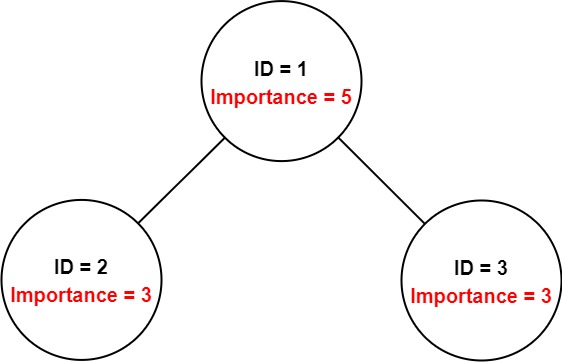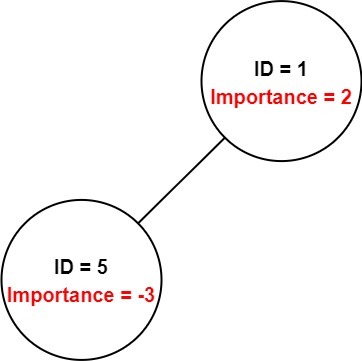Problem
You have a data structure of employee information, including the employee's unique ID, importance value, and direct subordinates' IDs.
You are given an array of employees employees where:
employees[i].idis the ID of theithemployee.employees[i].importanceis the importance value of theithemployee.employees[i].subordinatesis a list of the IDs of the direct subordinates of theithemployee.
Given an integer id that represents an employee's ID, return **the *total* importance value of this employee and all their direct and indirect subordinates**.
Example 1:

Input: employees = [[1,5,[2,3]],[2,3,[]],[3,3,[]]], id = 1
Output: 11
Explanation: Employee 1 has an importance value of 5 and has two direct subordinates: employee 2 and employee 3.
They both have an importance value of 3.
Thus, the total importance value of employee 1 is 5 + 3 + 3 = 11.
Example 2:

Input: employees = [[1,2,[5]],[5,-3,[]]], id = 5
Output: -3
Explanation: Employee 5 has an importance value of -3 and has no direct subordinates.
Thus, the total importance value of employee 5 is -3.
Constraints:
1 <= employees.length <= 20001 <= employees[i].id <= 2000All
employees[i].idare unique.-100 <= employees[i].importance <= 100One employee has at most one direct leader and may have several subordinates.
The IDs in
employees[i].subordinatesare valid IDs.
Solution (Java)
/*
// Definition for Employee.
class Employee {
public int id;
public int importance;
public List<Integer> subordinates;
};
*/
class Solution {
public int getImportance(List<Employee> employees, int id) {
Map<Integer, Employee> map = new HashMap<>();
for (Employee emp : employees) {
map.put(emp.id, emp);
}
return calculateImportance(id, map);
}
private int calculateImportance(int id, Map<Integer, Employee> map) {
Employee employee = map.get(id);
int sum = employee.importance;
for (int sub : employee.subordinates) {
sum += calculateImportance(sub, map);
}
return sum;
}
}
Explain:
nope.
Complexity:
- Time complexity : O(n).
- Space complexity : O(n).